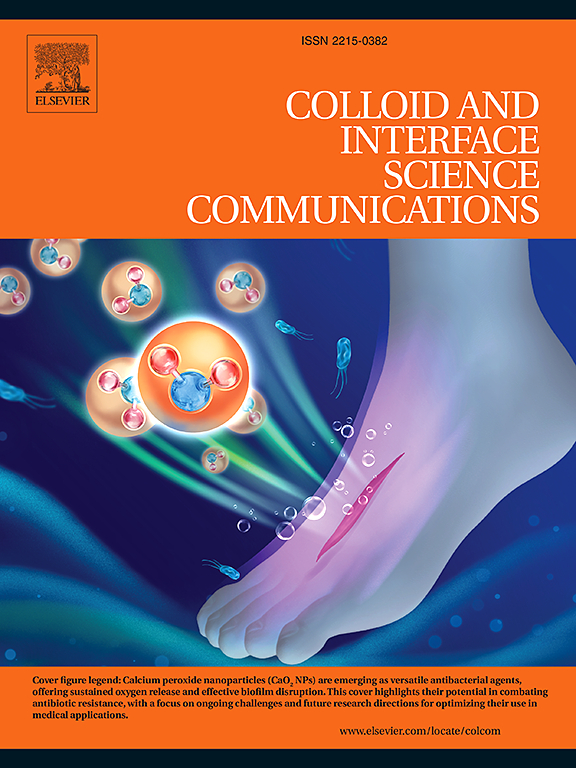Beyond photosynthesis: Engineering self-healing photocatalytic systems for sustainability
IF 4.7
3区 材料科学
Q2 CHEMISTRY, PHYSICAL
引用次数: 0
Abstract
Self-repairing photocatalysts represent a groundbreaking advancement in photocatalysis, addressing key challenges such as catalyst degradation, material fatigue, and efficiency loss across diverse applications. Inspired by natural photosynthesis, these systems incorporate self-healing mechanisms that restore functionality and extend operational lifespans, even under harsh environmental conditions. This review delves into the fundamental principles, innovative design strategies, and emerging trends in self-repairing photocatalysts, emphasizing their transformative potential in sustainable fuel production, environmental remediation, and carbon fixation.
Key topics include molecular-level self-repair mechanisms, surface regeneration, bio-inspired adaptive interfaces, and multi-step repair strategies. Advanced characterization techniques, such as in situ monitoring and time-resolved spectroscopy, are highlighted for their role in optimizing self-healing processes. The synergy between photocatalytic activity and self-repair capabilities is explored through applications such as water splitting, CO₂ reduction, and wastewater treatment, showcasing systems that effectively mitigate degradation.Bio-inspired approaches, including peptide-based self-assembly and metal-organic frameworks, demonstrate exceptional stability and efficiency in photocatalytic systems. Additionally, cutting-edge molecular repair mechanisms, such as artificial enzyme cascades and dynamic covalent chemistry, are examined for their potential to enhance system longevity and performance. Advancements in real-time electron microscopy and AI-assisted degradation monitoring are also reviewed, offering insights into atomic-level repair processes and enabling predictive maintenance to sustain long-term functionality. The review further highlights the implementation of self-repairing photocatalysts in industrial-scale applications, including solar fuel production, CO₂ reduction, and wastewater treatment. Challenges related to scalability, cost-effectiveness, and long-term stability are addressed, with proposed solutions to overcome these barriers. Future research directions emphasize quantum dot-based self-repair systems, bio-hybrid catalysts, and AI-driven adaptive responses, paving the way for commercially viable, self-maintaining photocatalytic systems. These innovations hold immense promise for advancing sustainable energy production, environmental remediation, and carbon fixation, offering critical solutions to global sustainability challenges.

超越光合作用:工程自愈光催化系统的可持续性
自修复光催化剂代表了光催化领域的突破性进展,解决了催化剂降解、材料疲劳和各种应用中的效率损失等关键挑战。受自然光合作用的启发,这些系统结合了自我修复机制,即使在恶劣的环境条件下也能恢复功能并延长使用寿命。本文综述了自修复光催化剂的基本原理、创新设计策略和新兴趋势,强调了它们在可持续燃料生产、环境修复和碳固定方面的变革潜力。关键主题包括分子水平的自我修复机制,表面再生,仿生自适应界面和多步骤修复策略。先进的表征技术,如原位监测和时间分辨光谱,因其在优化自我修复过程中的作用而得到强调。通过水分解、二氧化碳减排和废水处理等应用,探索了光催化活性和自我修复能力之间的协同作用,展示了有效减轻降解的系统。生物启发的方法,包括基于肽的自组装和金属有机框架,在光催化系统中表现出卓越的稳定性和效率。此外,研究人员还研究了人工酶级联和动态共价化学等尖端分子修复机制,以提高系统的使用寿命和性能。还回顾了实时电子显微镜和人工智能辅助降解监测的进展,提供了对原子级修复过程的见解,并使预测性维护能够维持长期功能。该综述进一步强调了自修复光催化剂在工业规模应用中的应用,包括太阳能燃料生产、二氧化碳减排和废水处理。解决了与可伸缩性、成本效益和长期稳定性相关的挑战,并提出了克服这些障碍的解决方案。未来的研究方向强调基于量子点的自我修复系统、生物混合催化剂和人工智能驱动的自适应反应,为商业上可行的、自我维持的光催化系统铺平道路。这些创新为推进可持续能源生产、环境修复和碳固定提供了巨大的希望,为全球可持续发展挑战提供了关键的解决方案。
本文章由计算机程序翻译,如有差异,请以英文原文为准。
求助全文
约1分钟内获得全文
求助全文
来源期刊

Colloid and Interface Science Communications
Materials Science-Materials Chemistry
CiteScore
9.40
自引率
6.70%
发文量
125
审稿时长
43 days
期刊介绍:
Colloid and Interface Science Communications provides a forum for the highest visibility and rapid publication of short initial reports on new fundamental concepts, research findings, and topical applications at the forefront of the increasingly interdisciplinary area of colloid and interface science.
 求助内容:
求助内容: 应助结果提醒方式:
应助结果提醒方式:


